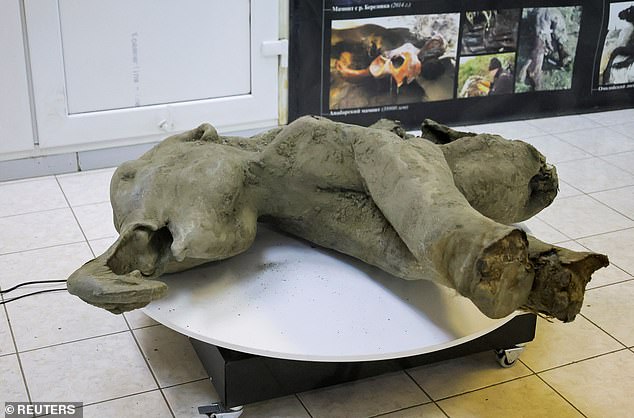The World’s Best-Preserved Baby Woolly Mammoth Found in Siberian Crater
A remarkable discovery has been made in the Siberian crater known as the Mouth of Hell, where the world’s best-preserved baby woolly mammoth has been found. The mammoth, named Yana, lived over 50,000 years ago and was just one year old when it died. The remains were found in the Batagai megaslump, a rapidly expanding thermokarst depression in the Yakutia region of Russia.
Yana is the most intact of the seven baby woolly mammoths found in the world, with her trunk clearly visible and uniquely preserved. The mammoth was 4ft tall at the withers, weighing around 180kg (28 stone or almost 400lbs). The extinct animal’s limbs had been pecked at by ancient sparrows or small mammals, but all the organs remain intact.
The examination of Yana’s remains showed that her head is uniquely preserved, as are all the organs. The trunk, lips, ears, and eye sockets are preserved, indicating that they were not eaten by predators. The back of the animal was damaged, possibly due to a fatal injury during the Ice Age.
The discovery was made last summer, but the find was only recently announced by Russian scientists. The remains of Yana were found in June 2024, and major tests will be undertaken on the baby mammoth next year.
The Batagai megaslump is a rapidly expanding thermokarst depression, emitting up to 5,000 tons of organic carbon per year. The thawing of permafrost continues to pose a threat to the region, with potential for increased emissions.
This is not the first spectacular discovery in the Russian permafrost. In recent years, scientists have found a perfectly preserved prehistoric baby horse, a 32,000-year-old sabre-toothed cat cub, and a 44,000-year-old wolf carcass.
Yana’s discovery is a significant find, providing valuable insights into the lives of woolly mammoths during the Ice Age. The remains of the baby mammoth will be studied further to learn more about this ancient species.

